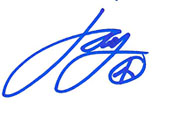We just got back from a family road-trip to Manhattan, Rhode Island, and Massachusetts. Not surprisingly, we had a spectacular time. The kids traveled well and loved life on the road.
The hardest part of it all was probably being pushed to put my new painting on hold for a week. I find it so emotionally difficult to leave unfinished business on the table, or in this case, the easel.
As much as I wanted to just be a hermit for a week to finish my painting, the universe and my wife had other plans. I’m glad. As it turns out, taking a little break from the big canvas proved good for me. I see it now with fresh eyes and a relaxed spirit.
I’m on the final phases of the painting now. It seems like I’ve been able to take it up a few notches from where it was just a couple weeks ago. My creativity has been pushing me into territories that are less familiar which can feel rather uncomfortable. Those growing pains are necessary though, in order to evolve.
People often ask me how I know if a painting is done.
For me, when time allows for it at least, it’s when I feel like I’ve exhausted every possibility, yet still haven’t done too much. When I finish a long session and I realize that I’m no longer making progress, then I know it’s done.
That’s easier said than done though. It’s a fine line to walk because, for several weeks, I felt like no really great progress was happening.
I could have said it was done and I’d guess that a good amount of people might have liked it as is. I could signed it, called it done and moved on.
If I did call it done a couple weeks ago though, it would have come from the laziness within me. That side of me that doesn’t want to do more can be like a nagging child in the backseat saying, “Are we there yet”?
The same strategy applies when wanting to become a better painter. When you hear that side of yourself whining, you reply, “Nope, not there yet“, and you keep going.
Not knowing what to do next doesn’t mean your work is done. Far from it. I think many artists stop before a painting has really said all that it has to say. Frankly, because it’s hard to keep going. Our impulse is to stop the discomfort and just move on is powerful. This leaves paintings incomplete. This is how abilities, fulfillment, and potential remain stagnant.
Of course there’s another scenario here. Never being done because you’re seeking perfection and thus, do too much. It’s easy, for me at least, to get lost in details. I find my eyeballs getting closer and closer to the canvas making every brush-stroke a composition within itself.
It can go on and on like self-replicating fractals that never end. This feels at times like an act of over-achievement. Yet, ironically enough, it sometimes is a tactic to subconsciously avoid going through the pain of starting something new. When a painting is over-done, the soul is polished away and the life is sucked out of it.
Somewhere between doing too much and not enough is the sweet spot. As I look at this new piece of art, I can honestly say that it’s almost there.







